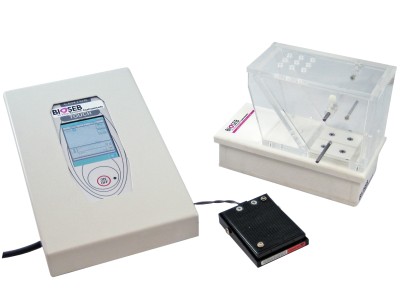Authors
Le Cudennec C, Castagné V
Lab
Porsolt S.A.S, France
Journal
Eur J Pharmacol.
Abstract
We compared the preclinical analgesic activity of three marketed drugs with different pharmacological properties, pregabalin, tramadol and duloxetine, described as effective against neuropathic pain in the clinic. These drugs were tested against evoked pain in two different neuropathic models in the rat, the Bennett (CCI) and the Chung (SNL) models. The selected endpoints were tactile allodynia, tactile hyperalgesia, heat hyperalgesia and cold allodynia. Although all three drugs displayed analgesic activity, the effects observed varied according to the behavioral evaluation. Pregabalin showed clear analgesic effects against cold allodynia and tactile hyperalgesia in both the CCI and Chung models. Tramadol was active against all four endpoints in the Chung model with similar effects in the CCI model, apart from tactile allodynia. Duloxetine inhibited tactile allodynia and heat hyperalgesia in both neuropathic pain models. It also displayed efficacy against tactile hyperalgesia in the CCI model and against cold allodynia in the Chung model. These data confirm that the CCI and the Chung models of neuropathic pain do not detect the activity of analgesics with the same sensitivity. Furthermore, the mode of stimulation (tactile or thermal) and the type of endpoint (allodynia or hyperalgesia) can further influence the observed efficacy of gold standards as well as novel compounds developed for treating neuropathic pain symptoms.
BIOSEB Instruments Used
Static Weight Bearing Touch: Incapacitance Test (BIO-SWB-TOUCH-M)
Source :

 Douleur - Allodynie/Hyperalgésie Thermique
Douleur - Allodynie/Hyperalgésie Thermique Douleur - Spontanée - Déficit de Posture
Douleur - Spontanée - Déficit de Posture Douleur - Allodynie/Hyperalgésie Mécanique
Douleur - Allodynie/Hyperalgésie Mécanique Apprentissage/Mémoire - Attention - Addiction
Apprentissage/Mémoire - Attention - Addiction Physiologie & Recherche Respiratoire
Physiologie & Recherche Respiratoire




































 Douleur
Douleur Système Nerveux Central (SNC)
Système Nerveux Central (SNC)  Neurodégénérescence
Neurodégénérescence Système sensoriel
Système sensoriel Système moteur
Système moteur Troubles de l'humeur
Troubles de l'humeur Autres pathologies
Autres pathologies Système musculaire
Système musculaire Articulations
Articulations Métabolisme
Métabolisme Thématiques transversales
Thématiques transversales Congrès & Meetings
Congrès & Meetings 